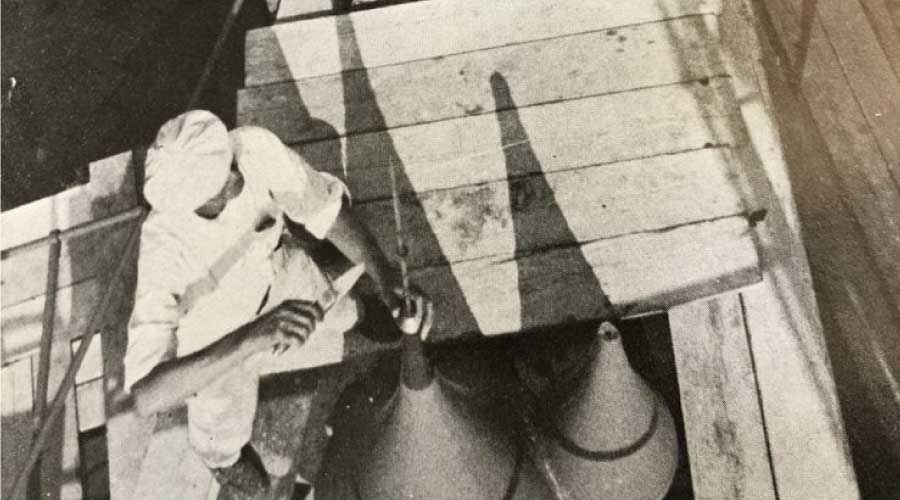The Noise in the 'Attic?' History Deteriorating
 IT'S OLD NEWS, in some ways. A historic structure desperately needs repairs. Its exterior can’t hold out the water. Each day, workers check the interior for leaks and the resulting damage. Maintenance and engineering managers struggle to find money in the budget to address the problems. The organization’s executives search in vain for new ideas — and new sources — for funding the much- needed repairs.
IT'S OLD NEWS, in some ways. A historic structure desperately needs repairs. Its exterior can’t hold out the water. Each day, workers check the interior for leaks and the resulting damage. Maintenance and engineering managers struggle to find money in the budget to address the problems. The organization’s executives search in vain for new ideas — and new sources — for funding the much- needed repairs.
It could be a school, hospital or government building in any U.S. city. Recent decades have seen innumerable accounts of notable buildings neglected and on the verge of becoming dangerous or unusable.
This time, though, the situation is different. The building in question is the Smithsonian Institution, often called the “nation’s attic” because it houses a seemingly endless trove of the country’s most prized artifacts. The Smithsonian’s contents and operations — its 600 or so owned and leased buildings include 18 museums and galleries and 10 science centers — touch more lives in more regions of the country than most other buildings.
And yes, they’re deteriorating. The Smithsonian estimates it will need about $2.3 billion through 2013 to address its facilities problems, including $1.43 billion for revitalization and $713.9 million for maintenance, according to a report by the Government Accountability Office (GAO).
The numbers are larger than those a school district might face, but the problems are the same in nature. Parts of some facilities have been declared off limits because of infrastructure deterioration. Water leaks caused by deteriorating roofing and plumbing elements have led to damaged interior materials. (“We are excellent drapers of plastic,” says one Smithsonian Archives official.)
To maximize its efficiency and resources, the Smithsonian centralized its facilities organization in 2001, but the challenges remain.
Most institutional and commercial facilities face some deferred maintenance, and all of the work deserves attention in one way or another. But some examples of this problem deserve a different level of attention. Maybe shining a brighter light on the Smithsonian’s problems will help the public better understand the deferred maintenance problem, and actually do something before it’s too late.
Somebody wise once said that those who can’t learn from the past are condemned to repeat it. Now, it looks like we’re on the verge of going one step further: Those who can’t study the past can’t learn from it.
Related Topics:








 IT'S OLD NEWS, in some ways. A historic structure desperately needs repairs. Its exterior can’t hold out the water. Each day, workers check the interior for leaks and the resulting damage. Maintenance and engineering managers struggle to find money in the budget to address the problems. The organization’s executives search in vain for new ideas — and new sources — for funding the much- needed repairs.
IT'S OLD NEWS, in some ways. A historic structure desperately needs repairs. Its exterior can’t hold out the water. Each day, workers check the interior for leaks and the resulting damage. Maintenance and engineering managers struggle to find money in the budget to address the problems. The organization’s executives search in vain for new ideas — and new sources — for funding the much- needed repairs.


